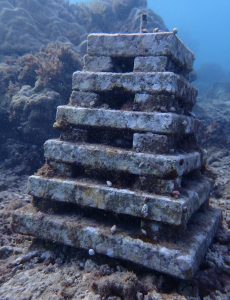By Dr. Craig Dahlgren, Executive Director, PIMS
Shark and sea turtle conservation in The Bahamas has recently re-emerged as a contentious issue. Since 2011, The Bahamas has been a shark sanctuary with a full prohibition on shark fishing, and since 2009 the harvest of sea turtles has been illegal. Both measures were implemented due to dramatic declines in shark and sea turtle populations. Several species of sharks and sea turtles are listed as endangered or critically endangered, and most others are vulnerable to extinction with their populations trending downwards.

Recently there have been calls to remove protective bans for sharks and sea turtles and potentially allow culling of their populations. This request is based on the assertion that shark and sea turtle populations have increased to the point where they have become a “nuisance and a danger to fishermen,” and compete with fishers for catching conch, lobster and fish. As a leading marine research organization working in The Bahamas for nearly 50 years, the Perry Institute for Marine Science believes that marine resource management and policy should be based on facts and evidence about the status of marine ecosystems and resources in addition to input from various stakeholders.So, what are the facts about sharks and turtles in The Bahamas and what information do policy makers need to know before making decisions regarding their management? In June 2018, a scientific paper published in the journal, Fisheries Management and Ecology, by Bahamian marine scientist Dr. Krista Sherman and colleagues, examined these very questions. Based on this review and other research studies, we briefly highlight below what we know and what we need to find out before making policy changes:
What is the status of shark populations?
- There are at least four species of sharks found in The Bahamas that are either considered endangered or critically endangered and several others are considered vulnerable to extinction with their populations declining (https://www.iucnredlist.org).
- Shark related tourism in The Bahamas is estimated to bring in $113.8 million, roughly 1/3 of the value of dive tourism nationally.
- While shark fishing was banned in The Bahamas in 2011, an earlier ban on longlining established to protect Bahamian fishermen in 1993 essentially ended the commercial shark fishery in The Bahamas by 1999.
- Studies of shark populations from 1979-2013 show a 22% decrease in tiger sharks while oceanic white tips and other species are highly migratory and leave The Bahamas.
- Shark populations are characterized by slow growth due to the fact that they are late maturing animals that produce only a few pups a year, so significant recovery of populations to historic levels is likely to take at least a decade if not more. For example, Feldheim and colleagues working in Bimini found sharks born in Bimini in 1993-1997 returned there to give birth 14-17 years later.
What about assertions of increased shark attacks?
- Over the past decade, shark attacks in The Bahamas have averaged one per year, with only two total fatalities (https://www.floridamuseum.ufl.edu/shark-attacks/trends/location/world/).
- For shark attacks that were classified as unprovoked (i.e., not involving spear fishing or other activities that attract sharks) (https://www.floridamuseum.ufl.edu/shark-attacks/maps/world-interactive/), the number of shark attacks from 2011-2020 since the shark ban has been in place was lower than from 2001-2010 or from 1991-2000.
Available evidence suggests that shark populations in The Bahamas are still likely to be low – likely remaining well below levels from 30 years ago, although an updated assessment of populations is needed.
What about the status of sea turtle populations?
- As of 2017, of the four sea turtle species found in The Bahamas, one is considered endangered, one critically endangered and the rest vulnerable with populations globally in decline (https://www.iucnredlist.org).
- Despite the ban on turtle fishing in The Bahamas, turtle populations are still reduced due to pollution, diseases, and harvest as they migrate to other countries where they are not effectively protected.
- Like sharks and other vulnerable marine species, sea turtles are late maturing and have relatively low reproductive and juvenile survival rates, leading to slow population growth, making species recovery within a 10-year period unlikely.
- Other than humans, sharks – particularly tiger sharks – are some of the greatest predators of sea turtles, so if shark populations were to increase, we could expect to see a decrease in sea turtle populations.
What about the impact of sea turtles on fishery resources?
- While juvenile green turtles can eat lobster and juvenile conch, only loggerhead turtles eat conch and lobster and a wide range of prey throughout their life. Larger green turtles are vegetarians.
- Other species found in The Bahamas, like leatherbacks, eat jellyfish and hawksbills eat only certain species of sponges on reefs (not commercially harvested sponges).
So, what does all of this mean? While there may be some indications of increased populations for some species, data are limited and do not support widescale recovery of shark and sea turtle populations. Further, there are few studies examining the impact of turtle populations on conch and lobster populations, but based on the limited number of species that eat conch, the effect of sea turtles on conch populations is likely to be relatively low compared to fishing and other factors.As an island nation, the economy, ecology, and culture of The Bahamas is intricately linked to the health of its marine resources. From the coral reefs, seagrass beds, and mangroves that are the foundation of the nearshore marine environment, to grazing species like parrotfish and green sea turtles, to key predators like Nassau grouper and sharks, the delicate balance of marine ecosystems is necessary for both a healthy environment and economy. People are an important part of this balance and we must also account for both the short and long-term well-being of communities that depend on these resources. We trust that the government will take scientific evidence into consideration when making decisions and will invest in the future of its marine resources by supporting critical research to evaluate management actions.
Download the full statement here:
https://www.dropbox.com/home/PIMS%20files?preview=PIMS+Statement+-+6+Nov+2020+Good.pdf

Photos on this page provided by Shane Gross.

A Year Later, Stranded Tug and Barge Still Scars Reef in Fowl Cays National Park–Residents Demand Accountability
A haunting aerial view of the grounded tug and barge in Fowl Cays National Park—still embedded in coral a year later, a stark reminder of the cost of inaction. Photo

Women Leading Mangrove Restoration in The Bahamas
Have you ever wondered who’s behind the scenes saving our environment, right in our own backyard? Picture a group of energetic, determined women rolling up their sleeves and diving into

Rewilding the Marls of Abaco: PIMS Plants 100,000 Mangroves and Counting in 2024
As the afternoon sun bathes the Marls of Abaco in golden light, Bahamian boat captain Willis Levarity–locally known as “Captain to the Stars”–stands ankle-deep in soft, warm mud. A broad

Unveiling Coral Reef Biodiversity: Insights from ARMS Monitoring Structures
An ARM teeming with new coral recruits and a diversity of marine life, highlighting reef recovery and biodiversity Understanding Coral Reef Biodiversity Most new PhDs in the natural sciences move

7 Key Takeaways from COP16: Confronting Coral Reef Challenges in a Changing Climate
United #ForCoral: Experts, advocates, and leaders from across the globe join forces at COP16 for the #ForCoral conference, hosted by the International Coral Reef Initiative. Together, they’re driving urgent action

Fieldwork Wrap-Up: Strengthening MPA Management in The Bahamas
Marine protected areas (MPAs) are critical tools in the conservation of marine species and habitats, safeguarding reefs, seagrasses, and mangroves that provide vital ecosystem services to coastal communities. At the



